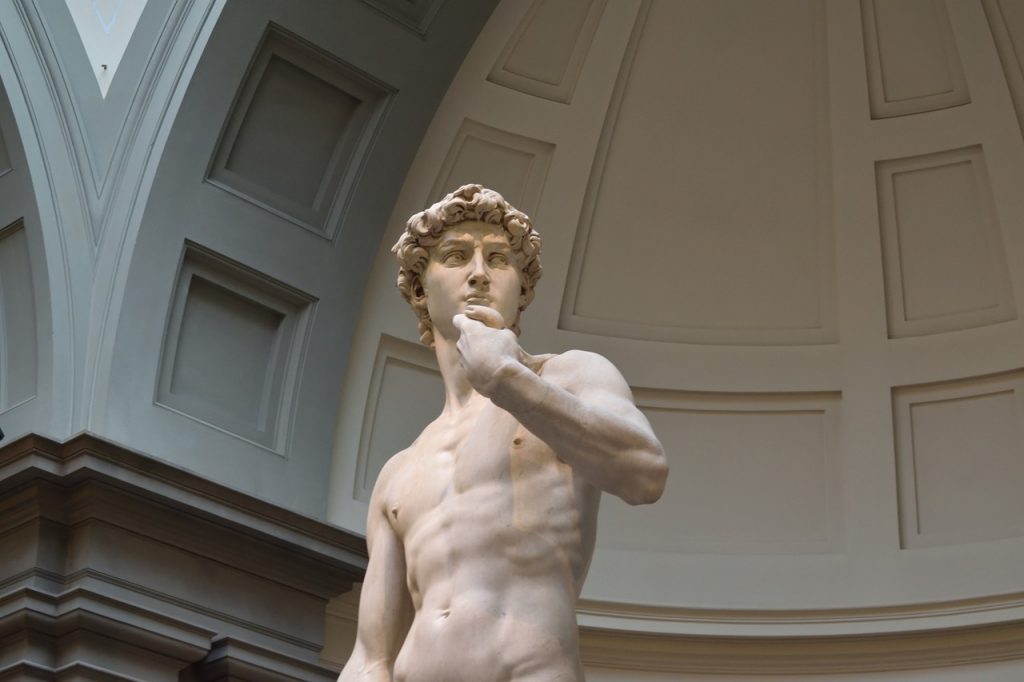There is something profound that links the date of 9 September to the genius Michelangelo Buonarroti. Precisely on 9 September 1501 Michelangelo picked up his chisel and began to feel the hardness of a block of marble. In a few days, he would begin to extrapolate his own majestic David.

The sculpture is 520 centimeters high and effectively represents the Renaissance. To tell the truth, if we talk about symbols, we cannot ignore the fact that together with other great works such as the Colosseum or the Tower of Pisa, Michelangelo's David is representative of Italian culture.
The representation of David
When, at the beginning of 1504, Michelangelo finished the sculpture, the David was placed in Piazza della Signoria in Florence. The original purpose was to convey the strength of the Florentine Republic through its majesty. This one, represented by David, was always on alert and ready to counter the opposing forces. So much so that Michelangelo's work depicts the biblical scene in which David prepares for the confrontation with the fearsome Goliath.

The strength of a hero was therefore a symbol of the strength of Florence: a courageous republic ready to defend itself from apparently stronger enemies. The florid and handsome appearance of the David attracted Florentines from the very first moment. The power of the city was well described by the sculptural perfection of the sculpture. Furthermore, many Florentine republicans wanted to read in the pride of David that of democracy as opposed to the tyranny of the Medici. So much so that precisely that beauty was immediately taken as an example as an ideal of masculine perfection in art.
The sculptor and his David
The start of the carving work on the David was not rosy. Michelangelo found himself in front of a block of marble of not excellent quality at all. It was a fragile material full of so-called taroli, ie cracks and holes. Furthermore, that type of marble was subject to the phenomenon of firing, that is to say that the cohesion of the crystals tended to loosen. It also seems that even the shape of the block was not in keeping with the work that Michelangelo intended to start. It was tall and narrow, crumbly to the point that it was feared that it could not bear the weight of the finished sculpture.

Yet Michelangelo did not back down. He viewed the feat as a challenge. In fact, as mentioned at the beginning, on 9 September 1501 he tested the hardness of the marble. A few days later the works began concretely and a month later he closed the area so that no one could peek.. First of all he covered the taroli with lime mortar and plastered the veins. Then he brought down the curtain. Nothing was known of that sculpture until 23 June 1503.
Towards the conclusion
That fateful day Michelangelo had the enclosure in which he had barricaded himself for about two years opened. The David, which was now almost complete, could finally be admired by the curious. In May of the following year the David was completed. The genius of Michelangelo had given birth to the legend. All for 400 florins! Since 1910 in Piazza della Signoria there is a copy of the David which is kept at the Gallery of the Academy of Florence.

The David and the restorations
However, the longevity of this perfect sculpture has undergone many restorations. The interventions began in 1512 and ended (and not definitively) in 2003.





